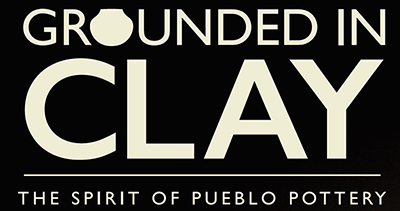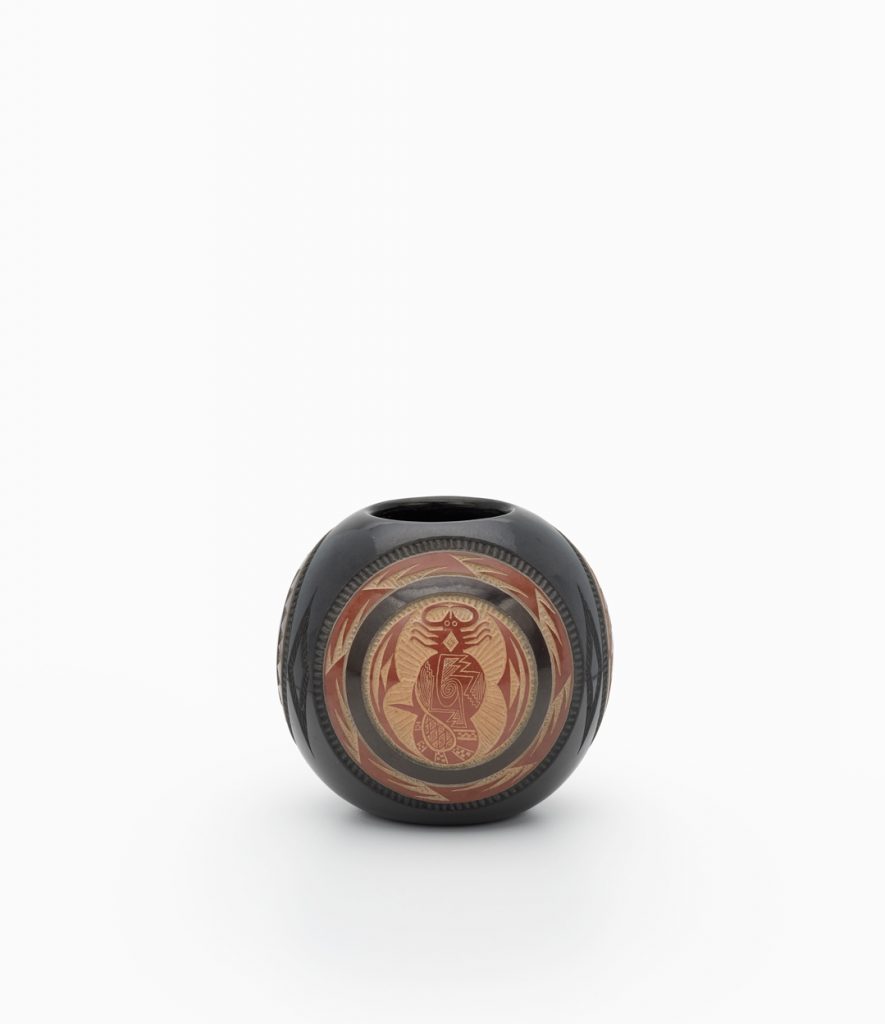Cliff Fragua
Jemez Pueblo
Curator Cliff Fragua, from Jemez Pueblo, was born in 1955 in Albuquerque, New Mexico. He is a sculptor who works primarily in stone, and also in bronze and glass. His highest achievement in his career was a commission from the State of New Mexico for a sculpture that is now in the permanent collection of the National Statuary Hall in the US Capitol Building, Washington, DC. He has a studio in Jemez Pueblo, where he also resides.
Cliff chose the following for the Grounded in Clay exhibit:
Innovative Transition in Clay
For decades, the criteria for what constituted “traditional Pueblo pottery” were controlled by academics, art dealers and critics, and amateur collectors. Because many Pueblo potters relied on the pottery market, they had little opportunity for expression or expansion of design and form. It seemed as if any challenges to the status quo disrupted what was supposed to be “Southwest Pueblo Pottery.”
I chose this pot because it represents a transition from traditional Pueblo pottery to more contemporary forms in the late 1960s and early ’70s. Works by Popovi Da and, shortly thereafter, Joseph Lonewolf and Tony Da were influential in that shift. Their vessels inspired many emerging Native artists, me included, to develop new techniques in not just pottery and design, but also Native art forms as a whole.
Joseph Lonewolf (Santa Clara) and Tony Da (San Ildefonso) were both advanced in their studies and development of traditional Pueblo pottery-making. Their methods included maintaining important spiritual connections with the material, and the honoring of clay, earth, natural elements, and ancestral influences. At the same time, they were bold enough to explore and create other techniques and styles.
Lonewolf was the son of Camilio Sunflower Tafoya and Agapita Tafoya. He was known for his use of historical methods and his development of sgraffito and bas-relief techniques in clay. Beginning in the early 1970s, Joseph changed the world of Santa Clara pottery by incorporating and further developing sgraffito (which involves lightly etching the surface of the clay) and incised designs (more deeply cut into the clay) in his work.
Tony Da came from a family of innovators. His paternal grandparents, Julian and Maria Martinez, were the first to create black-on-black pottery at a time when polychrome pottery was the mainstay of San Ildefonso. Tony’s father, Popovi Da, began making pottery in 1962 and experimented with many different types, including what is now called sienna ware. In 1967 he added sgraffito elements to his pottery, as well as inlay turquoise—a combination that was a first among the Pueblo potters.¹ Tony, along with Joseph Lonewolf, would become known for taking the sgraffito process to another level of artistry and accomplishment.
Pottery by Tony Da, and especially by Joseph Lonewolf, has had a major influence on my own sculptural work. Their style inspired some of my design elements, and their sgraffito is similar to the sgraffito technique that I use in my stone sculpture.
¹ “The Pottery and Paintings of San Ildefonso Artist Tony Da,” https://tonydapottery.com (accessed December 2021).

